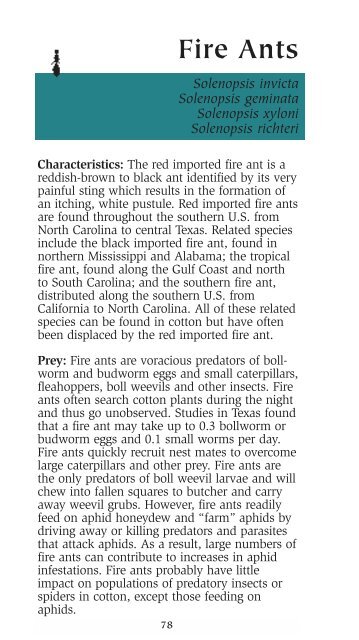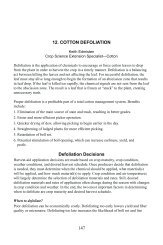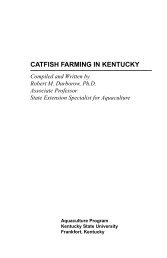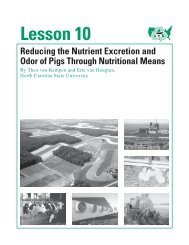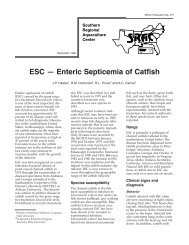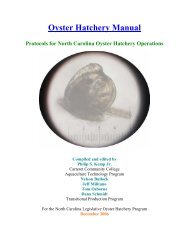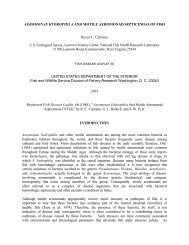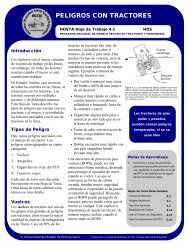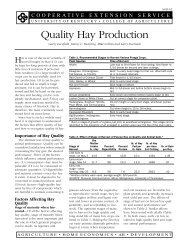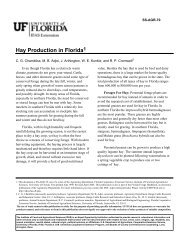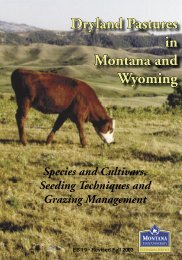Recognizing the Good Bugs in Cotton - Texas Is Cotton Country ...
Recognizing the Good Bugs in Cotton - Texas Is Cotton Country ...
Recognizing the Good Bugs in Cotton - Texas Is Cotton Country ...
Create successful ePaper yourself
Turn your PDF publications into a flip-book with our unique Google optimized e-Paper software.
Fire Ants<br />
Solenopsis <strong>in</strong>victa<br />
Solenopsis gem<strong>in</strong>ata<br />
Solenopsis xyloni<br />
Solenopsis richteri<br />
Characteristics: The red imported fire ant is a<br />
reddish-brown to black ant identified by its very<br />
pa<strong>in</strong>ful st<strong>in</strong>g which results <strong>in</strong> <strong>the</strong> formation of<br />
an itch<strong>in</strong>g, white pustule. Red imported fire ants<br />
are found throughout <strong>the</strong> sou<strong>the</strong>rn U.S. from<br />
North Carol<strong>in</strong>a to central <strong>Texas</strong>. Related species<br />
<strong>in</strong>clude <strong>the</strong> black imported fire ant, found <strong>in</strong><br />
nor<strong>the</strong>rn Mississippi and Alabama; <strong>the</strong> tropical<br />
fire ant, found along <strong>the</strong> Gulf Coast and north<br />
to South Carol<strong>in</strong>a; and <strong>the</strong> sou<strong>the</strong>rn fire ant,<br />
distributed along <strong>the</strong> sou<strong>the</strong>rn U.S. from<br />
California to North Carol<strong>in</strong>a. All of <strong>the</strong>se related<br />
species can be found <strong>in</strong> cotton but have often<br />
been displaced by <strong>the</strong> red imported fire ant.<br />
Prey: Fire ants are voracious predators of bollworm<br />
and budworm eggs and small caterpillars,<br />
fleahoppers, boll weevils and o<strong>the</strong>r <strong>in</strong>sects. Fire<br />
ants often search cotton plants dur<strong>in</strong>g <strong>the</strong> night<br />
and thus go unobserved. Studies <strong>in</strong> <strong>Texas</strong> found<br />
that a fire ant may take up to 0.3 bollworm or<br />
budworm eggs and 0.1 small worms per day.<br />
Fire ants quickly recruit nest mates to overcome<br />
large caterpillars and o<strong>the</strong>r prey. Fire ants are<br />
<strong>the</strong> only predators of boll weevil larvae and will<br />
chew <strong>in</strong>to fallen squares to butcher and carry<br />
away weevil grubs. However, fire ants readily<br />
feed on aphid honeydew and “farm” aphids by<br />
driv<strong>in</strong>g away or kill<strong>in</strong>g predators and parasites<br />
that attack aphids. As a result, large numbers of<br />
fire ants can contribute to <strong>in</strong>creases <strong>in</strong> aphid<br />
<strong>in</strong>festations. Fire ants probably have little<br />
impact on populations of predatory <strong>in</strong>sects or<br />
spiders <strong>in</strong> cotton, except those feed<strong>in</strong>g on<br />
aphids.<br />
78


